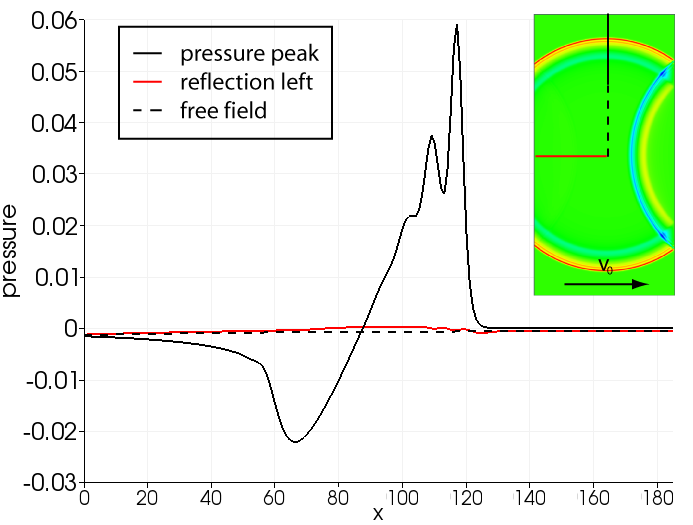 |
Non-reflecting Boundary Conditions for the Lattice Boltzmann Method
| Project team leader | Dipl.-Ing. Stefan Kollmannsberger MSc |
| PhD student | Dipl.-Inf. Martin Schlaffer |
| Principal investigators | Prof. Dr.rer.nat. Ernst Rank |
Project description
The Lattice Boltzmann method (LBM) has been proven to be a competitive tool for fluid flow simulations. As shown in previous work at the chair, the LBM seems to be especially valuable for the field of aeroacoustic applications. For this kind of application it emerges that superposed reflections from the simulation domain's boundaries destruct the significant signal. Apart from that issue the Lattice Boltzmann method is known in general to suffer from spurious pressure waves, usually evolving from poor initialization. Both problems make the use of non-reflecting boundary conditions (NRBCs) desirable. Existing approaches to NRBCs in the field of LBM suffer from significant reflection of transverse pressure waves.
The approach chosen in this work is to set a properly adapted acoustic impedance on the boundary by setting an appropriate particle speed, which depends on the density fluctuation. As this is in contradiction to a prescribed velocity or a desired pressure, those target values have to be gradually adapted, e.g. by changing the base velocity. Consequently this change is conducted without adaptation in terms of impedance respectively pressure and thus will inevitably cause a reflection. This necessarily results in a trade-off between rate of convergence to the desired boundary state and the amount of reflection.
So far various impedance boundary conditions in 2D and 3D have been derived and implemented for inviscid flow. Two principle approaches were conducted: adaptation of the impedance in normal and both in normal and tangential direction. While the first apporach is not ideally isotropic, it results in a most efficient implementation with significant extinction of spurious pressure waves. For the full adaptation of impedance in all directions an implicit solution of the underlying nonlinear equation is up to now the most efficient implementation strategy. It gains full isotropy on the boundary. An involved analytical solution for full adaptation is also derived but seems to be too costly to implement.
 Expanding pressure peak with superimposed flow of 0.1 Mach. |
M. Schlaffer, M. Geier, S. Kollmannsberger and E. Rank: "Non-reflecting free field boundary conditions for the Lattice Boltzmann method". ICMMES 2011.
M. Schlaffer, M. Geier, S. Kollmannsberger and E. Rank: "Non-reflecting inflow-outflow boundary conditions for Lattice Boltzmann methods using an intrinsically adapted acoustic impedance by separation of sound pressure levels". ICMMES 2010.
Contact: Dipl.-Inf. Martin Schlaffer